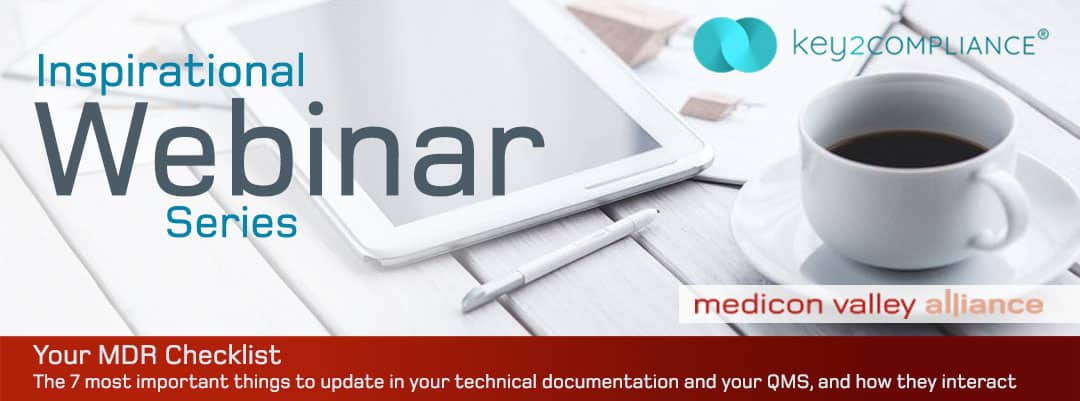The 7 most important things to update in your technical documentation and your QMS, and how they interact
Do you want to understand which parts of the MDR that you as medical device manufacturer must have in place on May 26th and what you need to adjust in your technical documentation, when CE-marking a device against the new regulation? Is your technical documentation clear, or can the conclusion on benefit-risk appear as ambiguous? And do you know why your Notified Body will audit also your website?
This webinar will help you prioritize your efforts and avoid typical pitfalls.
Date: 28th April 2021
Time: 9:00 – 10:30 CET
Venue: Online
You will gain insights into:
- Intended use and classification, where it all starts.
- How to integrate Risk Management and Post-Market Surveillance in the Technical Documentation
- Biological evaluation and the importance of chemical characterization
- Clinical evaluation, clinical studies, usability and residual risk
- Marketing – all you need to know about Article 7
- The key conclusion of your Technical Documentation – don’t spoil it!
- QMS aspects and validity of MDD certificates.
Agenda
| 8:50 | Online platform open for registering participants |
| 9:00 | Introduction of speakers, Key2Compliance and Medicon Valley Alliance Ase Ek, Senior Consultant and Trainer, Key2Compliance David M. Zepernick, Head of Business Development and Public Affairs, Medicon Valley Alliance |
| 9:05 | Intended use and classification, where it all starts Britt-Marie Gustavsson, Senior Consultant Regulatory Affairs, Key2Compliance |
| 9:10 | How to integrate Risk Management and Post-Market Surveillance in the Technical Documentation Britt-Marie Gustavsson, Senior Consultant Regulatory Affairs, Key2Compliance |
| 9.25 | Biological evaluation and the importance of chemical characterization Emma Pedersen, PhD, Director of Biological Evaluation & Toxicology, Key2Compliance |
| 9.35 | Clinical evaluation, clinical studies, usability and residual risk Robert Iosif, Senior Clinical Development Expert, Key2Compliance |
| 9.45 | Marketing – all you need to know about Article 7 Robert Iosif, Senior Clinical Development Expert, Key2Compliance |
| 9.55 | The key conclusion of your Technical Documentation – don’t spoil it! (Relation between CER, Risk Management and the PSUR) Britt-Marie Gustavsson, Senior Consultant Regulatory Affairs, Key2Compliance |
| 10:05 | QMS aspects and validity of MDD certificates Britt-Marie Gustavsson, Senior Consultant Regulatory Affairs, Key2Compliance |
| 10:15 | Q&A |
| 10:30 | End of webinar |
Speakers
| Organized by | In collaboration with |
 |



